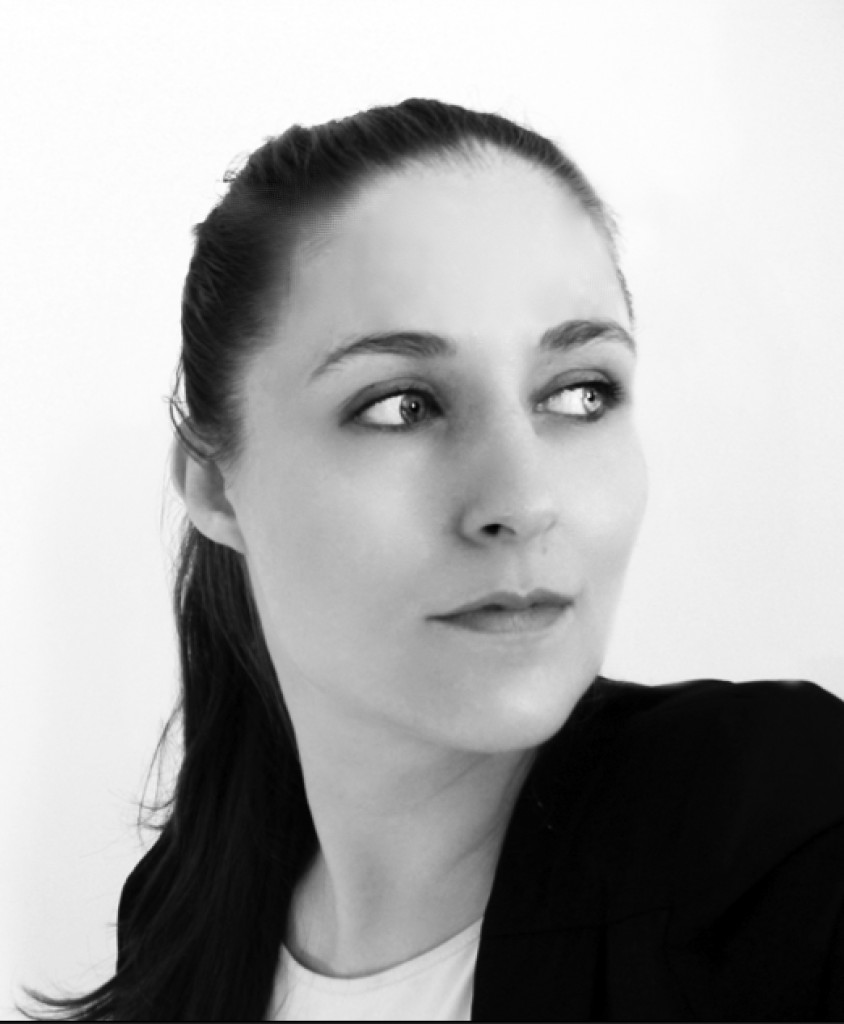Philomène Longpré
Philomène Longpré is a Canadian artist whose research encompasses performance, robotics, and interactive video. Since 1999, she is dedicated to the development of responsive art systems that translate body language while exploring the interaction between the physical and virtual worlds. Within her installations, visitors become an integral and influential component of the work and the virtual characters are redefined through their interactions with their environments, while transforming the audiovisual experience through the involvement of other sensory modalities.
Longpre holds an M.F.A. in Art and Technology Studies from the School of the Art Institute of Chicago and she pursued transdisciplinary research at the DXARTS Center of the University of Washington. In 2013, she completed a Ph.D. with a focus on interactive video installations, exploring the ways in which spatiality and materiality can increase sensory, affective, and cognitive responses to moving images. She conducted her research with SSHRC funding at Concordia University and the University of Washington. It emerged from intensive studies in the fields of fine arts, music, anthropology, computer science, and mechanical engineering.
Longpre’s works have been presented in numerous solo and group exhibitions around the world: Cereus Queen of the Night at the PHI Center during Elektra Festival, Formica at the C-2 Mtl and at the BIAN International Digital Arts Biennial in Canada ; Illusio, at the EXIT and VIA Festivals in France; Telematic Exchange, at the Looptopia Festival and at Collider Festival in United States; Octopus, at FILE Electronic Art Festival in Brazil, Oboro Montreal, and AIR Hong Kong Arts Centre in Hong Kong ; and Passage, at BUDI in South Korea, Thaïland New Media Art Festival and at the Festival Di Cupramontana in Italy.
Moreover, her art systems has won support from the Canada Council for the Arts, the Conseil des arts et des lettres du Québec, the Social Sciences and Humanities Research Council, and Fonds québécois de la recherche sur la société et la culture. She has also been sponsored in part by companies such as MicroVision Inc., Keen Projection Media Ltd., and NEC Display Solutions. In addition, she received the 2008 Award for Innovation in New Media Arts, by OCTAS; the 2005 Judith Hamel Trophy in New Media Arts; and the 2004 Prize of Excellence from the Hexagram Institute as well as The Pinsky Medal.
In 2017, she unveiled her first book untitled TRANSCENDARE, a bilingual monograph curated by Christine Redfern. Through selected images and insightful texts by leading international writers Kate Mondloch, Florence de Mèredieu, David Howes, Alison Syme, Isa Tousignant, Christine Redfern and from Philomène Longpré herself, this book gives a unique opportunity to explore Longpré’s astounding contribution to contemporary art.
Longpré taught Robotic Arts, Mechatronics, Wired (an introduction to media arts and innovative digital imaging), Performance Art and Contemporary Practice in Art and Technology in the Department of Art and Technology Studies at the School of the Art Institute of Chicago. Furthermore, she give courses about Interactive Art Systems, Robotics and Performances at the Hong Kong Art School and Experimental Cinema, (theory and practice on experimental film and video performance) at DXARTS Center, University of Washington. Currently, she is leading collaborative research in art and technology at her robotic art lab in Montreal and created a large-scale robotic art installation for the Studio Telus, Grand Théâtre de Québec.
—
Depuis 1999, Philomène Longpré crée des installations sculpturales où le spectateur, par sa présence, est engagé dans l’écriture artistique de ses œuvres. Sa pratique englobe à la fois la sculpture, la performance, les sons et la vidéo.
Elle se consacre au développement de systèmes artistiques, sensibles et réactifs qui traduisent le langage corporel tout en explorant l’interaction entre les mondes physique et virtuel.
Elle détient un Doctorat en étude et pratique des arts de l’Université Concordia (2013), une maîtrise en arts visuels de The School of the Art Institute of Chicago (2006) et a poursuivi sa recherche doctorale transdisciplinaire au DXARTS Center of University of Washington à Seattle. Ses œuvres ont été présentées dans de nombreuses expositions individuelles et collectives à travers le monde. De plus, ses œuvres de 1999 à 2017 ont fait l’objet d’une monographie intitulée TRANSCENDARE qui comprend des textes de Kate Mondloch, Florence de Mèredieu, David Howes, Alison Syme, Isa Tousignant, Christine Redfern et d’elle-même.
Philomène Longpré fut professeure à temps plein à The School of the Art Institute of Chicago où elle enseigna la sculpture et la mécatronique, ainsi que l’introduction aux arts médiatiques. Elle a également enseigné le cinéma expérimental et la vidéo performance au Centre DXARTS de l’Université de Washington ainsi que l’art robotique et les œuvres-systèmes à Hong Kong Art School. En 2019, elle fut invitée en tant qu’artiste-en-résidence, professeure à temps plein, dans le programme Intermedia du département d’art visuel de l’Université Concordia.
Actuellement, elle dirige des projets de recherche collaborative sur les manifestations sensorielles évoquées dans le cadre d’installations sculpturales. De plus, au cours des dernières années, elle travaille sur la réalisation d’œuvres-systèmes écoresponsables. Afin de répondre à notre responsabilité face à l’empreinte écologique en arts numériques, Philomène Longpé propose des projets en art robotique composés de matières biodégradables, de mécanismes recyclés et des systèmes munis de dynamo permettant aux visiteurs d’activer les oeuvres manuellement.
Ces projets de recherche font suite à son œuvre, Envolée Lyrique, une installation sculpturale d’envergure, réalisée récemment pour le Studio Telus du Grand Théâtre de Québec.
————————————————————————-



